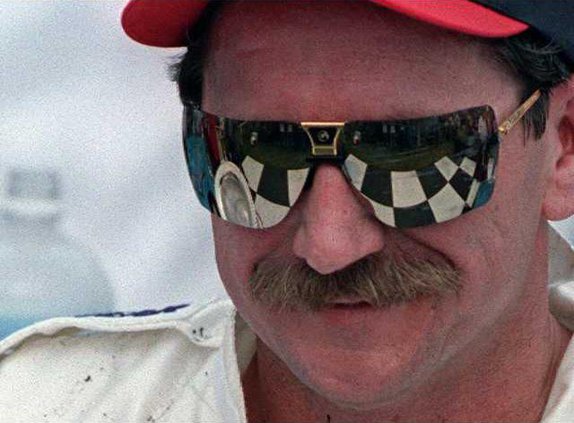DAYTONA BEACH, Fla. — Michael Waltrip still remembers what he felt the first time he smacked into one of the impact-absorbing SAFER barriers that sprouted on racetrack walls in the wake of Dale Earnhardt's death.
Or, rather, what he didn't feel.
As his car skidded toward the wall, a thought flashed through Waltrip's mind: He was planning a vacation, but figured he now would be headed to the hospital instead.
"We were going to Costa Rica the next day," Waltrip said. "As soon as it blew, I thought, 'I'm not going anywhere. I'm going to be eating out of a straw is what's going to happen to me.'"
And then ... nothing.
"I braced myself and went up and hit it, and I was like, 'That didn't hurt! That didn't hurt at all!'" Waltrip said.
Like so many drivers since Earnhardt died, Waltrip walked away unscathed.
With the 10-year anniversary of Earnhardt's fatal accident looming at Daytona International Speedway this week, the NASCAR great's legacy can be seen every time one of today's drivers waves to the crowd and remembers to thank his sponsors on TV after a crash that might have sent him to the hospital — or worse — not so long ago.
Earnhardt's loss was the wake-up call that caused a safety revolution, so much so that there hasn't been a driver death on the track in NASCAR's top three divisions since then.
It was a major change for a sport that had been at the back of the pack when it came to driver safety.
"If you were in my shoes 10 years ago, 11 years ago, and you said to me then, 'Ten years from now all these things are going to happen,' I'd say, 'You're nuts. There's not the willingness, the mindset, the dedication; it will never happen,'" Jeff Burton said. "I would have been wrong. We take for granted a lot of stuff. Drivers coming in today have no concept of what this was like 10, 11 years ago. No concept."
Earnhardt's death, and the national scrutiny it brought to NASCAR, resulted in several significant safety improvements:
—Adopting the HANS device, a head and neck restraint collar that was being used in other forms of auto racing but went largely ignored in NASCAR until Earnhardt's death.
Would a HANS have saved Earnhardt, and a handful of other drivers who died of similar injuries before him?
"I believe that when Dale Earnhardt Sr.'s car hit the wall and the belts from his safety harness were loaded by the impact that a HANS Device would have kept his head back," said Jim Downing, co-founder of HANS Performance Products. "That likely would have produced a better outcome under the different scenarios that have been proposed by experts. This is what it seems like to me, but we don't really know for sure."
—SAFER barriers, impact-absorbing walls that were being developed before Earnhardt's death. Increased interest and investment from NASCAR accelerated their implementation, and today the so-called "soft" walls line tracks from coast to coast.
—Better seats and improved cockpits.
Looking back, drivers can't believe how unsafe their seats were before Earnhardt's death.
"It didn't have to be the way it was," Mark Martin said. "The seats that we drove in were ridiculous. Ridiculous."
And Earnhardt's might have been one of the worst.
"(Today's seats) compared to his seat? Night and day," Robby Gordon said. "I don't know how to explain it any other way than that. But that's what he chose to drive in, and that's what made him comfortable in all those races prior to that. Us race car drivers, we become invincible — this is what I've done forever, and it hasn't hurt me."
The Dale Earnhardt legacy
10 years later, a safer NASCAR





